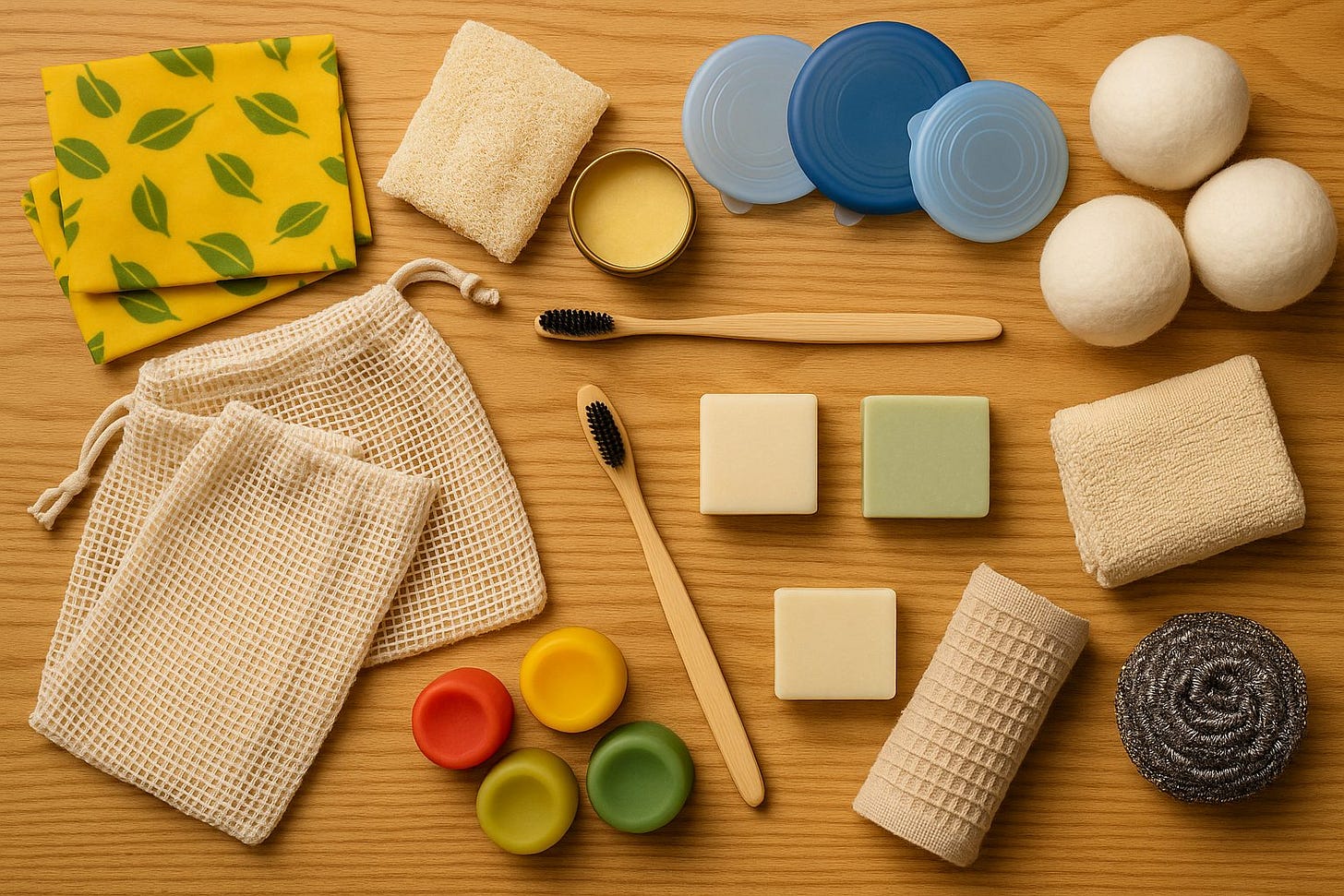Eco-Friendly on a Tight Budget: 5 Hacks for Under $20
Small swaps, big impact – affordable sustainability that doesn’t break the bank 💚
I think we all dream of saving the planet—without draining our wallets. But eco-friendly living doesn’t have to mean big bucks or guilt. With just a few clever swaps under twenty bucks, you can reduce your plastic use, cut waste, and feel pretty good. No compromise, just smart, snazzy swaps. Let’s dig in.
1. Swap Single-Use for Reusables
Why it matters: Single-use plastics are sneaky environmental culprits. But we can ditch them with low-cost reusable replacements.
Mesh produce bags (~$10) tackle those flimsy grocery bags and can eliminate over a hundred plastic bags per year.
Silicone food savers (~$7–18) like Food Huggers seal half fruits and veggies and reduce food waste—plus, they’re dishwasher-safe.
Benefits: Saves money in the long run, reduces trash, and feels kinda satisfying.
My advice: Stash a couple in your purse or car so you never forget them.
2. Embrace Reusable Kitchen Essentials
Paper towels? Plastic wrap? Leave them on the shelf. These $20-or-less alternatives are as clever as they are eco:
Swedish dishcloths (~$2/cloth) can replace ~15 rolls of paper towels and are biodegradable.
Beeswax wraps (~$13–18) act like reusable cling film. Washable, compostable, and way cuter than Glad.
Silicone stretch lids (~$16) fit over odd containers—no need for plastic wrap or foil.
Why it’s smart: Less consumption. Big return on investment. Cleaner conscience.
3. Choose Eco-Friendly Personal Care
Little daily swaps in your bathroom can make a huge difference.
Shampoo & conditioner bars (<$20) ditch plastic bottles and often last longer than liquid versions.
Bamboo toothbrushes ($9–12) decompose naturally, unlike plastic heads that linger forever.
Biodegradable floss picks or refillable floss (<$20) keep plastic out of landfills.
Upside: Cleaner routines, less clutter, and unconsciously sustainable.
4. Clean Green (and Cheap)
Cleaning doesn’t have to mean toxic sprays and plastic bottles. These hacks work wonders:
Used tea bags tackle grime on glass and metal, then go straight into the compost.
DIY vinegar & baking soda mixes for everything from tub to patio.
Stainless steel scrubbers & washcloths replace disposable sponges—cheaper, cleaner, and long-lasting.
Perks: Kitchen smells better. Surfaces shine. And you skip harsh chemicals.
5. Smart, Secondhand, Sustainable
Going green isn't only about buying new—it's about using what's already there:
Shop thrift or buy refurbished electronics to reduce demand for new production.
Secondhand textiles and furniture cut landfill waste and add unique character.
Reusable dryer balls (~$10–15) replace single-use dryer sheets, reduce drying time, and are budget-friendly.
Bottom line: Sustainable choices and savvy finds = saving money plus the Earth.
Bonus Hacks That Cost Almost Nothing
Still under budget? These freebies are surprisingly powerful:
Shorter showers and shutting off taps while brushing saves gallons and cash.
Unplug electronics & use LED lights – save up to 75% on energy use.
Collect rainwater or reuse cooking water for plants—Mother Nature appreciates small acts.
Final Thoughts
Going green doesn’t require lifestyle upheaval—just small but mighty swaps. Under $20, these hacks add up to real environmental wins and often outlast single-use alternatives. It’s aspirational but totally grounded. Ready to be the hero of your own home and the planet? 🌍
Which one will you start with? Or got another quirky eco-hack? Let me know—let’s keep the good ideas flowing!
Call to action: Share your favorite under-$20 eco-hack below! 👇 And if you want a starter pack list, I’ve got you.


